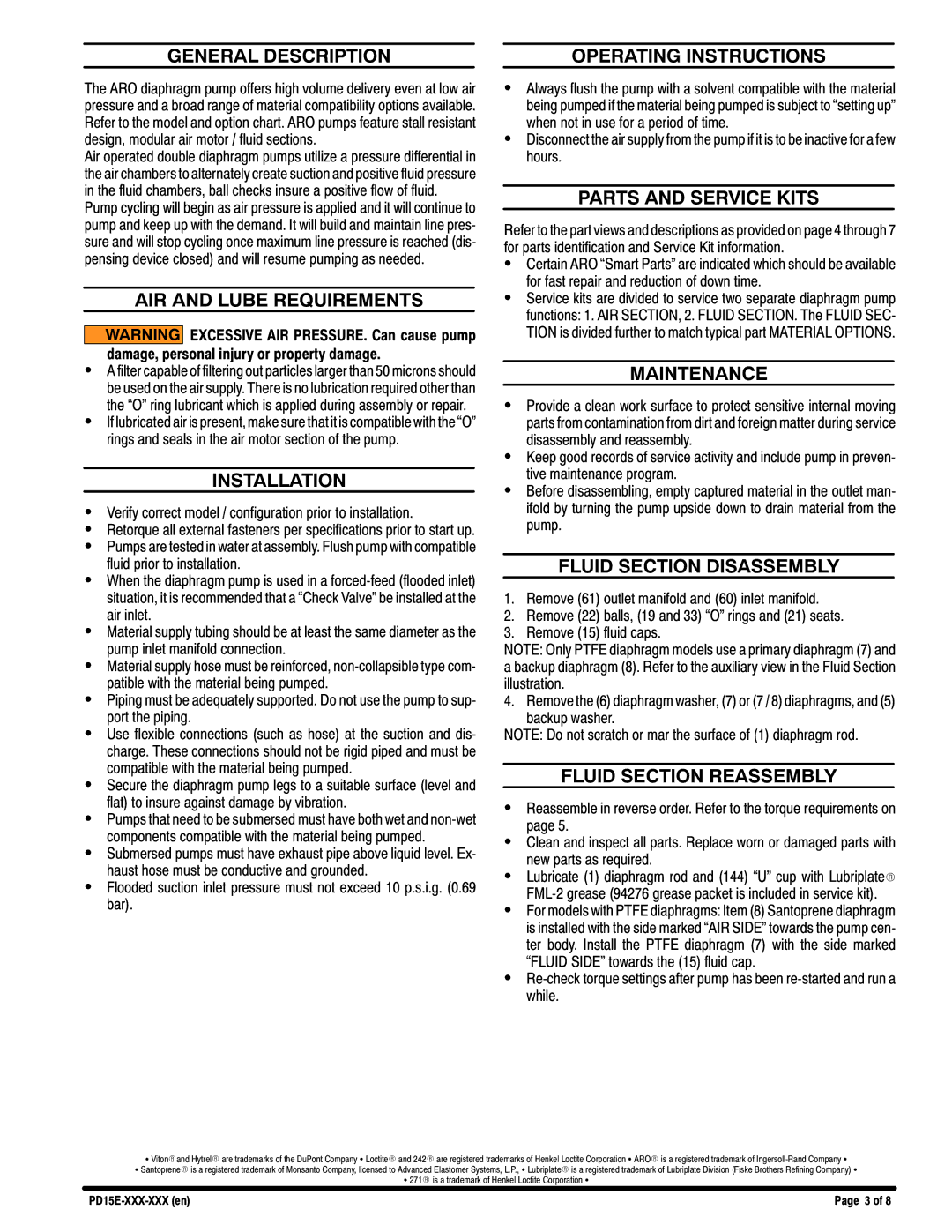PD15E-FES-PXX specifications
The Ingersoll-Rand PD15E-FES-PXX is a state-of-the-art portable air compressor designed for a wide range of applications, catering to both construction and industrial needs. It offers a unique blend of power, efficiency, and advanced technology, making it an essential tool for professionals in various fields.One of the standout features of the PD15E-FES-PXX is its enhanced air delivery system. This compressor can deliver a reliable and consistent output, ensuring that users can depend on it for their pneumatic tools and equipment. With a maximum pressure of 100 psi and an airflow rate that caters to various applications, it guarantees optimal performance for any job site.
The PD15E-FES-PXX is equipped with a powerful yet efficient engine that prioritizes fuel economy while delivering high performance. The engine's design minimizes emissions, reflecting Ingersoll-Rand's commitment to sustainability and environmental responsibility. This makes the PD15E-FES-PXX an excellent choice for both indoor and outdoor applications, meeting stringent environmental regulations without compromising power.
Additionally, this model features a user-friendly interface that allows operators to easily monitor and adjust the compressor settings. The digital display provides real-time feedback on pressure levels and performance metrics, ensuring that users have full control over their operations.
The PD15E-FES-PXX includes advanced noise-reduction technologies, making it significantly quieter than traditional models. This is particularly beneficial in urban environments or settings where noise restrictions are in place. The ergonomic design also enhances portability, featuring a compact and lightweight structure that allows for easy maneuverability on job sites.
Durability is another key characteristic of the PD15E-FES-PXX. Built with rugged materials and designed to withstand harsh conditions, this compressor is perfect for demanding environments. Ingersoll-Rand's reputation for quality engineering ensures that this air compressor will provide reliable performance over the long term.
In summary, the Ingersoll-Rand PD15E-FES-PXX stands out with its powerful air delivery, efficient engine, user-friendly controls, advanced noise reduction, and robust construction. It represents a significant advancement in portable compressed air technology, ensuring that professionals have the tools they need to succeed in their projects. Whether for construction, maintenance, or industrial applications, the PD15E-FES-PXX is an exceptional choice for optimal performance and reliability.

